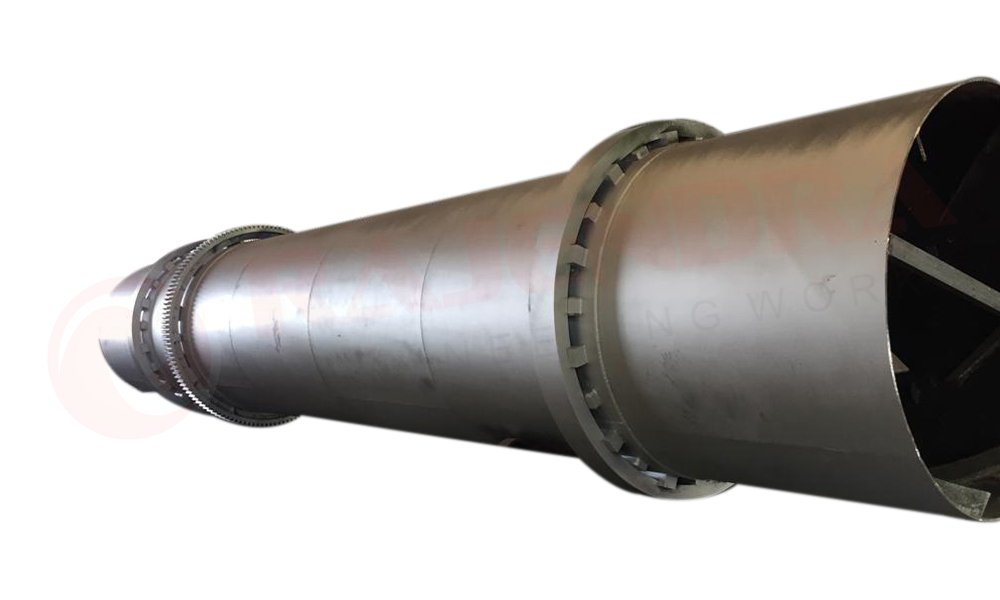Principle of Rotary Dryer
A Rotary Dryer operates on the principle of moisture removal through heat transfer and mass transfer, utilizing a rotating drum to facilitate uniform drying.

Key Features & Applications of Rotary Dryer
High Thermal Efficiency
- The rotary dryer efficiently transfers heat to the material through conduction, convection, or radiation.
- Advanced designs incorporate heat recovery systems to reduce energy consumption.
- Insulated rotary drums minimize heat loss and improve efficiency.
Continuous and Uniform Drying
- Rotating drum motion ensures the material is evenly exposed to heat.
- Internal lifting flights (or lifters) toss and mix the material for uniform drying.
- Prevents clumping, over-drying, and inconsistencies in moisture content.
Versatile Application
- Mining & Minerals (e.g., drying sand, limestone, phosphate, etc.)
- Agriculture (e.g., drying grains, corn, soybeans, and sugar beets, Grapes)
- Biomass & Wood Processing (e.g., drying sawdust, wood chips, and pellet
- Food Industry (e.g., drying coffee beans, starch, and spices)
- Chemical & Pharmaceutical (e.g., drying catalysts, fertilizers, and powders)
- Sludge & Waste Management (e.g., drying sewage sludge and industry Waste)
Large Processing Capacity
- Suitable for handling large volumes of bulk materials.
- Can operate continuously for high production rates.
- available in small-scale (lab use) and large-scale (industrial) models.


